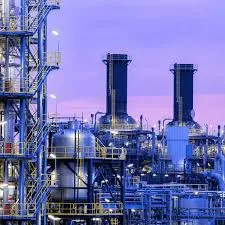
May . 09, 2025 08:39 Back to list
How Do Hot Water Boilers Work? Efficient Heating Systems Explained
- Overview of hot water boiler mechanics
- Key components and their functions
- Energy efficiency and operational data
- Technical advantages over competing systems
- Manufacturer comparison table
- Customized solutions for different needs
- Real-world application case studies

(how does a hot water boiler work)
How Does a Hot Water Boiler Work: Core Mechanics Explained
At its core, a hot water boiler operates by heating water through combustion or electric resistance and circulating it via pipes to radiators, underfloor systems, or domestic taps. The process begins with fuel ignition (gas, oil, or electricity), which heats a heat exchanger. Water absorbs thermal energy here, reaching temperatures between 140°F and 180°F (60°C–82°C). A pump then distributes the heated water while a thermostat regulates output, ensuring energy isn’t wasted. Unlike steam boilers, these systems operate under lower pressure, prioritizing safety and durability.
Critical Components and Operational Roles
Four primary components enable a boiler’s functionality:
- Burner/Heating Element: Initiates fuel combustion or electric heating.
- Heat Exchanger: Transfers heat from the source to water.
- Circulation Pump: Maintains water flow through pipes.
- Control System: Adjusts temperature, pressure, and safety protocols.
Energy Efficiency and Performance Metrics
Modern condensing boilers achieve 90–98% thermal efficiency by recovering latent heat from exhaust gases. For example, a typical 100,000 BTU/hr unit can reduce annual fuel costs by $220–$300 versus non-condensing models. Data from the U.S. Department of Energy shows that upgrading to high-efficiency boilers cuts CO₂ emissions by 1.2–1.5 metric tons yearly per household.
Technical Superiority in Design
Leading manufacturers like Viessmann and Bosch integrate stainless-steel heat exchangers and adaptive AI controls, extending product lifespans to 20+ years. Key innovations include:
- Low NOx emissions (≤30 mg/kWh), complying with EU EcoDesign 2025.
- Silent operation at ≤45 dB, ideal for residential use.
- Wi-Fi-enabled diagnostics for real-time maintenance alerts.
Manufacturer Comparison: Key Metrics
| Brand | Thermal Efficiency | Warranty (Years) | Energy Star Rating |
|---|---|---|---|
| Viessmann Vitodens 200-W | 98% | 10 | A+++ |
| Bosch Greenstar 8000 | 95% | 7 | A++ |
| Weil-McLain Evergreen | 96% | 12 | A+++ |
Tailored Solutions for Diverse Requirements
Commercial installations often require cascade systems with multiple boilers, while residential setups prioritize compactness. For instance, a 500-bed hospital in Berlin uses six Viessmann Vitodens units in tandem, achieving 24/7 hot water supply with 40% lower gas consumption. Homeowners in colder climates (e.g., Canada) opt for hybrid systems pairing boilers with solar thermal panels, reducing annual energy bills by 55–60%.
How Does a Hot Water Boiler System Work in Real Applications?
A 2023 retrofit project in Stockholm’s historic district replaced 30 aging boilers with condensing models, slashing district heating costs by €18,000/month. Sensors monitored flow rates and temperatures, optimizing performance via cloud analytics. Similarly, a luxury hotel in Dubai integrated stainless-steel boilers with desalination units, achieving 95% water reuse efficiency—proof of adaptability across industries.

(how does a hot water boiler work)
FAQS on how does a hot water boiler work
Q: How does a hot water boiler system work?
A: A hot water boiler system heats water via a fuel source (e.g., gas or oil) in a combustion chamber. The heated water circulates through pipes using a pump or natural convection, delivering heat to radiators or underfloor systems. Cooled water returns to the boiler to repeat the cycle.
Q: How does a boiler work for hot water?
A: A boiler heats water by burning fuel to generate heat, which transfers to water via a heat exchanger. The hot water is then stored in a tank or sent directly to taps and heating systems. Thermostats regulate temperature to maintain efficiency.
Q: How does a hot water boiler generate heat?
A: Fuel combustion in the boiler’s chamber creates heat, absorbed by a metal heat exchanger. Water flows over the exchanger, absorbing thermal energy before distribution. Exhaust gases are safely vented outside.
Q: What role do pumps play in a hot water boiler system?
A: Pumps push heated water from the boiler through pipes to radiators or heating zones. They ensure consistent circulation for even heat distribution. Once cooled, water returns to the boiler for reheating.
Q: How do controls regulate a hot water boiler’s operation?
A: Thermostats and sensors monitor water temperature, triggering the boiler to fire or shut off. Pressure valves and timers optimize performance and safety. Modern systems use smart controls for energy-efficient heating.
-
Comprehensive Guide to Steam Boiler Installation Diagram – Global Best Practices and Future Trends
NewsNov.24,2025
-
A Practical Guide to the Selection of Steam Boiler for Industrial Efficiency
NewsNov.23,2025
-
Comprehensive Guide to Steam Boiler PDF Manuals and Their Global Impact
NewsNov.22,2025
-
Discover How Steam Boiler Videos Improve Industrial Training & Safety
NewsNov.22,2025
-
Comprehensive Guide to Wood Fired Steam Boiler Design – Efficiency, Applications, and Innovations
NewsNov.21,2025
-
Comprehensive Guide to Steam Boiler Working – Efficiency & Applications
NewsNov.20,2025
Related PRODUCTS






















